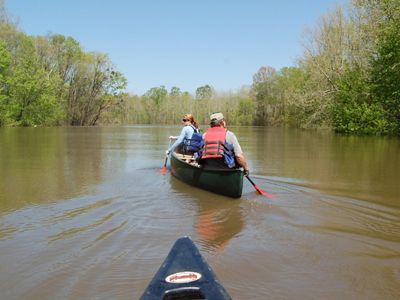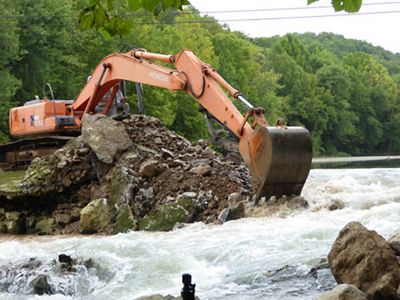Rethinking Dams
Many of Tennessee's dams don't fulfill their original purpose, and even cause harm.
As summer comes to a close, I am wondering how many more of us spent more time than usual—in this age of COVID—kayaking, fishing, swimming or even scuba diving in one of Tennessee’s many rivers. These rivers harbor some of the most diverse aquatic ecosystems in the nation. They support local economies and livelihoods. They generate power, sustain thirsty cities and crops, and fuel a booming outdoor tourism industry. Rivers are key to what makes Tennessee special.

Threats from Obsolete Dams
Some of Tennessee’s rivers are in peril, in some cases due to obsolete and even dangerous dams and other barriers that hinder them from providing important services to people and nature. Many dams no longer serve their original purpose, like powering mills, and can be a serious hindrance for three primary reasons:
- They jeopardize safety, including tragic drownings that happen each year when people get too close or underestimate their power.
- They disrupt the natural flow of a river and fragment important habitat for numerous aquatic species.
- They hinder recreational access to portions of a river where people could otherwise enjoy the water and surrounding nature.

Prioritizing Dam Removal Projects
TNC is working strategically with partners to inventory, prioritize and when appropriate, systematically remove dams that no longer serve a useful purpose and pose a threat to human and river health. So far, TNC has inventoried almost 2,000 dams around the state. Of those, we prioritized the top 10 most likely to make the biggest impact with regard to safety, habitat connectivity and recreation.
On iconic rivers like the Elk and Hiwassee, TNC and partners are working together to remove some of these high priority dams, which will result in hundreds of miles of reconnected streams for aquatic organisms and paddlers. The successful removal of the Roaring River in 2017 was the largest in Tennessee history executed for restoration purposes in partnership with the Tennessee Wildlife Resources Agency, the Army Corps of Engineers, the U.S. Fish & Wildlife Service, the Tennessee Department of Environment & Conservation and the Southeast Aquatic Resources Partnership. TNC and partners hope for similar results on future dam removal projects.

When it comes to these projects, here’s what we know. Removing a dam can take two years or more and require between $50,000 and $500,000 to complete from “soup to nuts.” With continued support, we hope to establish a project pipeline that leverages partnerships and financial resources in order remove between three and five of these outdated dams over the next five years to achieve the highest possible conservation outcomes.
When healthy, our rivers nourish our bodies, souls and even our pocketbooks. But dams, levees and other man-made structures disrupt their natural functions. I look forward to reporting back on ways we are working to bring our rivers back to life in order to conserve nature and foster safer and healthier communities throughout Tennessee.
Support Tennessee Nature
Help us work with landowners and ensure a future in which people and nature can thrive.




